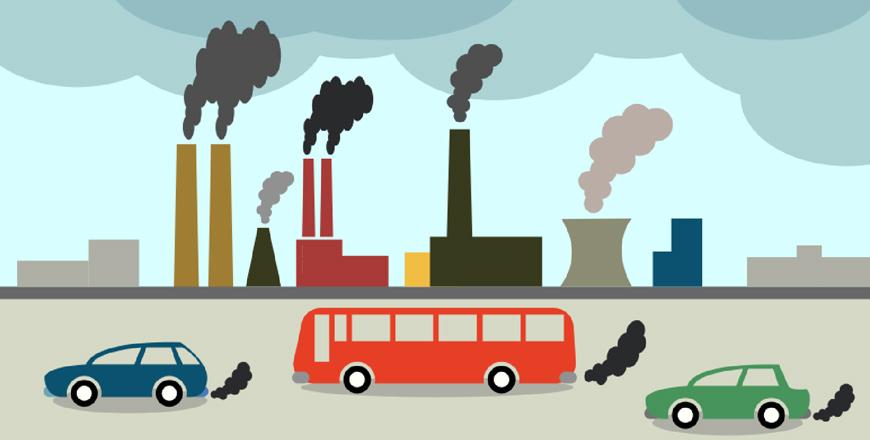You are here
Air pollution, especially ozone, tied to worsening lung damage
By Reuters - Aug 19,2019 - Last updated at Aug 19,2019

Photo courtesy of NASA/JPL-Caltech
The more exposure people have to air pollution, especially ozone, the more lung damage they develop over time, a US study suggests.
Researchers already knew that heavy air pollution makes lung disease worse in people who already have lung disease. The new study shows that even among people without lung disease, long-term exposure to air pollution even in relatively “clean” areas can lead to signs of chronic lung disease, said Dr Joel Kaufman, a co-author of the study and an environmental health researcher at the University of Washington in Seattle.
The current study focused on four major pollutants — ozone, an unstable form of oxygen produced when traffic and industrial fumes react with sunlight; nitrogen oxide, a byproduct of fossil fuel combustion that contributes to smog; black carbon, or soot, from coal-powered factories and traffic; and so-called PM 2.5, a mixture of solid particles and liquid droplets smaller than 2.5 micrometers in diameter that can include dust, dirt, soot and smoke.
Researchers assessed levels of these pollutants near the homes of 7,071 people in six US cities: Baltimore; Chicago; Los Angeles; St Paul, Minnesota; New York and Winston-Salem, North Carolina. Each participant got CT scans to look for the proportion of cells in the lung that are damaged — described as the percentage of emphysema. They also underwent lung function tests known as spirometry at the start of the study and again around 10 years later.
About 46 per cent of the study group were lifelong non-smokers, and 22 per cent of participants had some airflow obstruction at the beginning of the study period. Over 10 years, the average decline in lung function for the entire group was a little over 300 millilitres of volume on inhalation and exhalation tests.
People exposed to higher levels of each of the four pollutants at the start of the study were more likely to develop emphysema damage by the end, researchers report in JAMA.
Levels of most of the pollutants declined during the study, but concentrations of ozone rose. Each 3 parts per billion (ppb) of ozone in the air was associated with a lung function decline of 18 ml on a test of forced exhalation, and 40 ml on an inhalation test.
Over the 10-year period, each 3 ppb in average daily exposure to ozone was linked to lung damage equivalent to smoking a pack of cigarettes a day for 29 years or to an additional three years of aging, researchers found.
Ever-smokers and people with lung damage at the start of the study experienced the greatest increases in percentage emphysema and declines in lung function.
The results suggest that air pollution exposure may help explain why so many people without any history of smoking still develop chronic emphysema, the study team concludes.
One limitation of the study is that researchers only examined air pollution around people’s home addresses, and it’s unclear how much time people spent at work or other places away from home or how much pollution levels might differ at these other locations.
“People don’t spend all their time sitting on their front steps, so while we have a very good idea about their air pollution exposures, the exposures are a bit different indoors and when they travel to other places,” Kaufman said.
Even so, the results underscore how important it is for people with chronic lung diseases to take precautions to limit exposure to air pollution, Kaufman advised.
“Staying indoors on high air pollution days and having a good air filter at home can be helpful in highly polluted environments,” Kaufman said.
The results also highlight the importance of public health efforts to curb pollution.
“Great progress has been made in reducing air pollution concentrations due to health-based air quality protections and these need to continue to be strengthened,” Kaufman said. “Ozone concentrations in particular still need attention, and reducing use of fossil fuels and slowing climate change will help reduce these exposures too.”
Related Articles
Older adults are more likely to die on days when air pollution rises, even when contaminant levels are below the limit considered safe by US
People exposed to even low levels of air pollution are more likely to develop structural changes in the heart that can be a precursor to hea
Women with regular exposure to cleaning products may face a steeper decline in lung function over time, according to an international study.


















